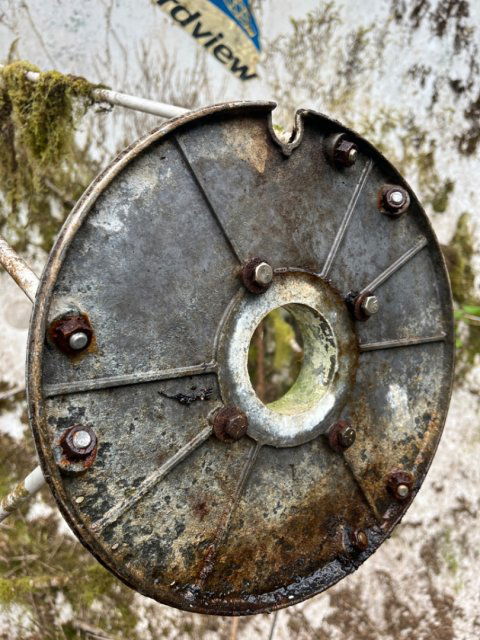I think he's thinking you don't have a usable scalar, but it looks like you do- like the feed & electronics simply unfasten and slip out of it. It's usable & needed, however, just for C-band, unless going to a C or C-Ku feed with its own scalar. If doing Ku only, then removing it altogether, if possible, is best. A Ku LNBF could be used either with or without a (smaller) scalar.
Perhaps he doesn't realize (per pics in thread) that this dish is already pole mounted- long ago.
"Stringing" is the old-school way to check for dish deformation. Pull string or wire taut across dia. (face) of dish at 2 or 3 circumferential locations. The strings should just touch each other at the center without pressure on one another to indicate a non-warped reflector. Yours probably isn't significantly warped unless maybe a tractor ran into it or something. Birdviews are pretty strong.
A declination adjustment, if added, would go where the top azimuth pivot is. It would allow to lengthen/shorten the top anchorage of the main pivot. Its purpose is to keep the dish's focus on the geo arc throughout its azimuth travel. Your dish is likely reasonably usable as-is for some multi-position use. If looking for single-sat reception, at least at first, just go find it by moving the dish on its pivot (as like when the arm extends/retracts) and then checking whether an elevation adjustment (main up/down securing bolt) yields any stronger signal. You don't need any declination fine-tuning for single-position reception.
Perhaps he doesn't realize (per pics in thread) that this dish is already pole mounted- long ago.
"Stringing" is the old-school way to check for dish deformation. Pull string or wire taut across dia. (face) of dish at 2 or 3 circumferential locations. The strings should just touch each other at the center without pressure on one another to indicate a non-warped reflector. Yours probably isn't significantly warped unless maybe a tractor ran into it or something. Birdviews are pretty strong.
A declination adjustment, if added, would go where the top azimuth pivot is. It would allow to lengthen/shorten the top anchorage of the main pivot. Its purpose is to keep the dish's focus on the geo arc throughout its azimuth travel. Your dish is likely reasonably usable as-is for some multi-position use. If looking for single-sat reception, at least at first, just go find it by moving the dish on its pivot (as like when the arm extends/retracts) and then checking whether an elevation adjustment (main up/down securing bolt) yields any stronger signal. You don't need any declination fine-tuning for single-position reception.




